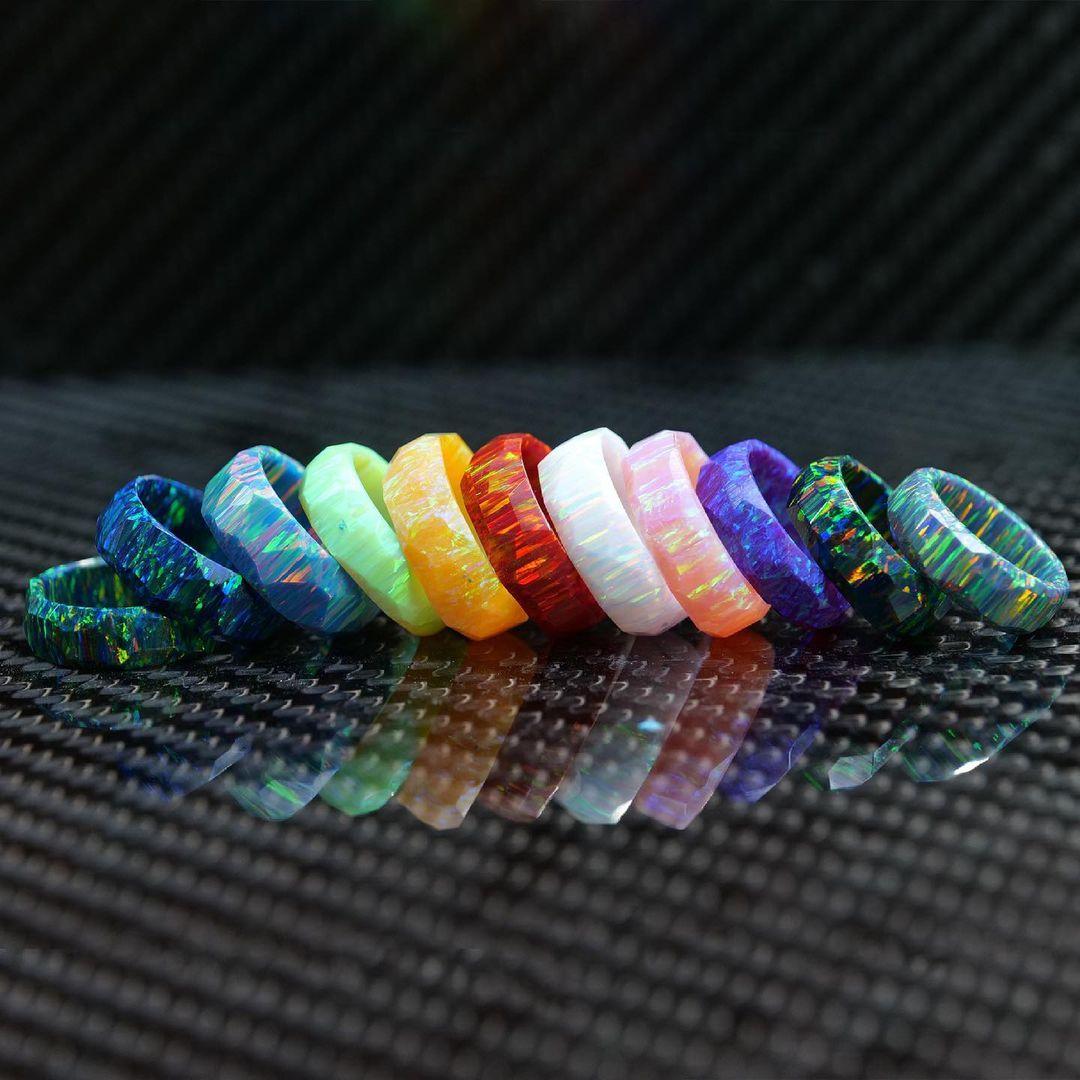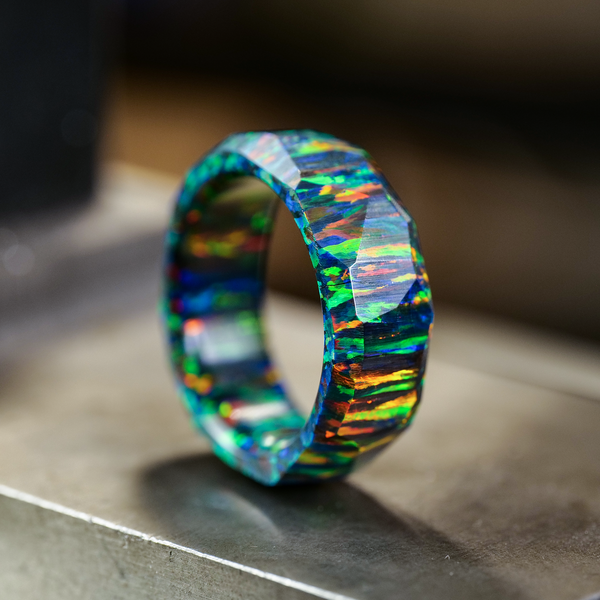Useful Tips for Selecting and Caring for Opal Jewelry
Useful Tips for Selecting and Caring for Opal Jewelry
Ensuring that your jewelry lasts a lifetime may take a little more than just the usual washing and wiping, especially if you’re the type who enjoys adding a touch of radiance to your outfits. There are gemstones that are known for their durability, while others—like opals—have been recognized as one of the most fragile. Choosing and maintaining your jewelry requires a lot of attention in general, but opals, in particular, need a little extra care! Its durability may be quite the deal breaker to some, however, despite its delicate nature, the opal’s brilliance is unmatched, and is still amongst one of the most popular gemstones for many kinds of jewelry. When properly selected and taken care of, the opal truly does shine and will do so for generations. Whether you are considering purchasing opal rings as an engagement ring, wedding band or as a perfect gift anytime soon, or need help maintaining your precious opal jewelry, or if you’re just the slightest bit curious about opals, here are some useful tips for selecting and caring for opal jewelry.
What is an Opal?
Scientifically, the opal is an amorphous solid consisting of silica spheres of various sizes and is mostly produced in Australia. Australian opal is one of the more coveted opals in the world along with Ethiopian Opal. Precious opals and common opals are the two general classifications, however, they still come in numerous different types and colors because of the opal gemstone’s lack of an organized molecular pattern. Precious opals are a type of opal that are said to be even rarer than diamonds and is only 5% among the opals most commonly found in Australia. The majority of opals are distinguished by the beautiful rainbow of colors that shine, otherwise known as an opal’s “play of color”. It is exactly this distinctive trait that has given the gemstone it’s name, originating from the Greek word “Opalus” which simply means “to see all colors”.
History of Opal
Much like its physical trait, the opal gemstone has also been represented quite colorfully throughout history. Arabic legends dictate that the opal was a stone sent from the heavens through flashes of lightning. It represented hope and purity during the Greco-Roman era and was coveted by many. Its appearance in Pliny the Elder’s work on Natural History describes it as “displaying at once the piercing fire of rubies, the purple brilliancy of amethysts, and the sea-green of emeralds”. This union of colors is what greatly contributed to the Medieval European rumor that the opal possessed magical properties of all gemstones combined, which partly led to its widely known association with bad luck. Its popularity dipped because of this notion, but thanks to Queen Victoria’s fascination towards this vibrant gemstone, the opal rose back to fame and popularity once again, and has stayed popular since.
Choosing an Opal Color
Choosing an opal that fits you best may be overwhelming at first, considering that opals vary widely in prices and types. Take the time to check out the most popular variations and gauge whether you gravitate towards a certain color or brightness! If none of the more mainstream opals fit your fancy, there are multiple other types that may just be your perfect fit. You may like opals that shine with warmer or cooler hues to match your skin’s undertones, opals that fabulously shine in brilliance, or ones that are more subdued but are equally as beautiful. There is an opal for everybody, so exploring your options is always a highly recommended tip!
Choosing an opal that fits you best may be overwhelming at first, considering that opals vary widely in prices and types. Take the time to check out the most popular variations and gauge whether you gravitate towards a certain color or brightness! If none of the more mainstream opals fit your fancy, there are multiple other types that may just be your perfect fit. You may like opals that shine with warmer or cooler hues to match your skin’s undertones, opals that fabulously shine in brilliance, or ones that are more subdued but are equally as beautiful. There is an opal for everybody, so exploring your options is always a highly recommended tip!
Black Opals
Black opals, for instance, are one of the most popular kinds and consist of only 1% of the opals produced in Australia. These opals are not, in fact, completely black, but simply have dark body tones (or background colors, if you will), ranging from black to grey. It is precisely the darker body tones that enhance the play of colors, making them more vivid and striking. Black opals in general are known to be the most valuable, even more so when colors such as red, orange, and yellow appear in the spectrum. Black opals fit both warm and cool undertones and its mysterious yet wondrous aura is a perfect fit for everybody.
White Opals
White opals, on the other hand, are a lot more common and are also by far the cheapest. White opals have pale body tones and while they are significantly less vibrant than their dark counterparts, this does not mean that they are any less beautiful! People are still very much enamored by the ethereal and fairy-like mood it evokes, and is still one of the most widely sought after colors. White opals are classic, elegant, and adds a touch of luminosity to anyone who wears a white opal ring.
Crystal Opals
Crystal opals, however, are a little different! Often mistaken as the white opal, crystal opals are distinguished by the translucence of the stone rather than their body tones! Being able to see through an opal is one of its biggest characteristics, and its translucence is what adds to this stone’s brilliance. Crystal opals are typically more valuable than the white opal, and while they may not be as vibrant as the black opal, they definitely make stunning additions to any kind of look.
Fire Opals
Fire opals, then, are any kinds of opal that naturally displays a distinctly dominant shade of red, orange, or yellow. Fire opals can be in the form of being a translucent, blazing mono-colored stone or an opaque yet glistening gemstone with a shining play of color. This considerably rare gem is best suited for ones with warmer undertones but are still versatile to work with varying styles.
Synthetic vs Authentic
Deciding whether you should get synthetic or authentic opals may depend not only on your budget, but also how frequently you plan on wearing your opal ring. Solid opals are significantly more valuable as they are made purely out of opal, but do take note that solid opals may be more prone to scratches because of how naturally fragile the stone is. When thick enough, however, solid opal rings can withstand being worn everyday without getting damaged, provided that the metals containing the gemstone have bezels and other alternatives to prevent the stone from getting scratched. Otherwise, solid opals are best suited for jewelry that don’t often get exposed to wear and tear, like opal earrings, brooches or an opal necklace.
Synthetic opal is lab created opal that is created to look exactly like its authentic counterpart. In fact, to the naked eye and most trained eyes, you will not be able to tell the difference. That is how good these lab created opals have become. Synthetic opals boast two major advantages to authentic opals, and that is they are more durable and much more affordable. If you value these two things, we definitely recommend going with synthetic, since they virtually look identical!
Proper Opal Maintenance
It’s one thing to choose an opal, its another thing to actually maintain it. Simply wearing your opal ring and leaving it out and exposed haphazardly may do more harm to your opal than good. Thankfully, despite the opal being more delicate than most gemstones, caring and cleaning your opal is not complicated at all!
Solid authentic opals have about the same hardness as glass, so it would definitely do you well to treat your opal with the same kind of care you would do any other glass object you own! Aside from not exposing your opal ring to extreme temperatures and ensuring that you remove your jewelry when potentially at the risk of any kind of abrasion (especially when you work with your hands), solid opals can be cleaned simply with a mild detergent and warm water with a soft toothbrush or a cloth. Soaking a solid opal in water is safe, however using harsh chemicals such as bleach and chlorine should generally be avoided.
If it ever comes to a point where your opal does get damaged/dirty, find a jeweler and have them professionally polished (something Patrick Adair Designs offers). Not only will they give back its life and vigor, but they will also also check and ensure your opal’s security!
Opals are very special gemstones and are easily one of the most beautiful. They radiate a kind of magic and wonder that is exclusive only to them and each one is as different as the next. Their sheer brilliance makes up for how delicate they are, but when carefully and properly taken care of, your opal jewelry will certainly shine for years to come. We hope these useful tips not only help you decide and maintain an opal that adds to your general look and overall lifestyle, but also be a perfect representation of your uniqueness as an individual!
























Leave a comment